

by Editor
AR - augmented reality, a technology that allows attracting the audience's attention to a product or offer. Previously, AR was more entertainment-focused, but now AR ad format in the Facebook feed has become a powerful business tool. By configuring this format, you can increase conversions and boost user trust in advertising.
Let's look at the features of AR ads and how to work with this type of advertising on Facebook and Instagram.
What do AR ads represent
AR ads are advertisements with augmented reality that are displayed in Facebook and Instagram feeds, as well as in Instagram Stories. Augmented reality itself represents virtual objects or items that are superimposed on top of real images or videos.
Starting from 2019, all users, including advertisers, arbitrageurs, or brand representatives, can create their AR filters. Facebook partnered with the development company Spark AR Studio, and through this program you can create various augmented reality objects.
In Facebook, AR filters and masks are displayed in the feed as ads and promoted content. AR ads demonstrate their effectiveness, as confirmed by data from Meta itself. The AR advertising format increases ad recall by 87%.
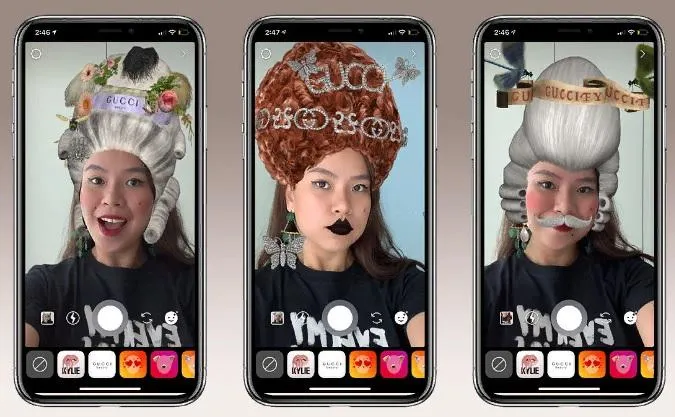
AR technology capabilities for promoting nutra offers on Facebook and Instagram
With AR, users can virtually try out a product on themselves, increasing their engagement and interest in the product. Let's explore the available AR effects that can be used in your advertising campaigns and creatives.
AR masks add visual and audio effects to images:
- face filter — this can alter facial contours, for instance, to demonstrate how a cosmetic or skincare product changes one's appearance;
- beauty mask — this mask can apply makeup to the face, and it's being actively used by brands promoting cosmetics;
- face tracker — this feature applies effects to the face in response to movements like turning, smiling, or adding additional objects such as animal ears or beards;

- hand and body tracker — when hands or other body parts appear in the frame, virtual items can be added to them, making it seem like the person is holding a product or package;
- background replacement mask — this feature allows you to add any background behind the user or presenter;
- randomizer mask — this mask randomly determines what object the user is associated with or their mood, which can help showcase a brand's assortment;
- thematic mask — created based on trendy movies, TV shows, games, or events;
- assistant mask — assists users in making choices, such as selecting a weight loss product.
To make a newly created mask accessible to users, it needs to be published in Stories. Subscribers can then add the mask to their list from Stories.
If a webmaster decides to create a mask independently for promoting offers, it needs to go through moderation. Moderation may take several days. It’s essential to learn the rules of Facebook and Instagram regarding working with masks. For example, it’s prohibited to create effects that depict dangerous procedures like plastic surgery.
In addition to masks, more complex AR objects can be added. For example, you can vividly present reviews or product packaging with various effects. In videos, you can showcase a face on the product, add hands and legs. Trendy music and sounds can also be added to AR advertising. Ads that uplift the mood, surprise, and look more native are less irritating and encourage users to watch until the end and click on the CTA button.
How to create AR advertising
Users see AR advertising in their Facebook feed. Thanks to AR technology, they can experiment with effects. When setting up such advertising, you can add a CTA button. This way users can proceed with the purchase.
To create such advertising, you need to go to the Spark AR Studio program. This program was developed by the Spark AR company, an official partner of Facebook.
Here's how to work in the program:
- Go to Meta Spark Hub.
- Create a permission group for uploading AR objects on behalf of your Facebook account.
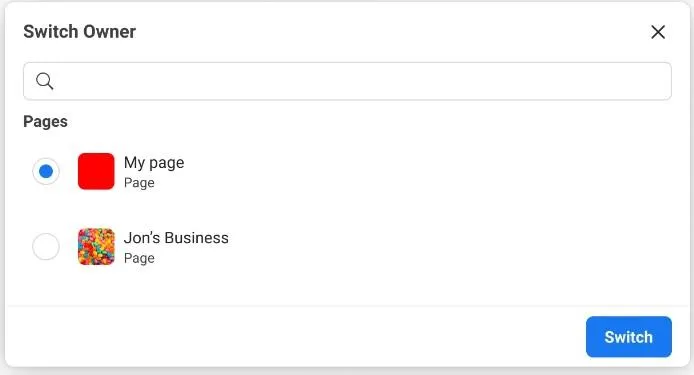
- Reach out to an AR partner to create effects, verify them for compliance with Spark AR and Facebook's rules and policies.
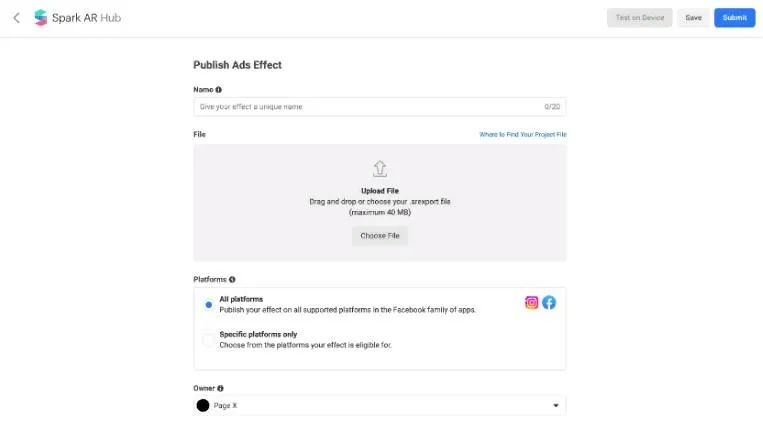
- After receiving the final results, create a video and embed the AR effects in it. This video is needed for Facebook's moderators to review the AR effects for compliance with the rules. You don't necessarily have to publish this video for public access; it will be displayed in the Ads Manager preview.
- Choose the owner of the effect in Spark AR Hub.
- Select Facebook Ads as the destination.
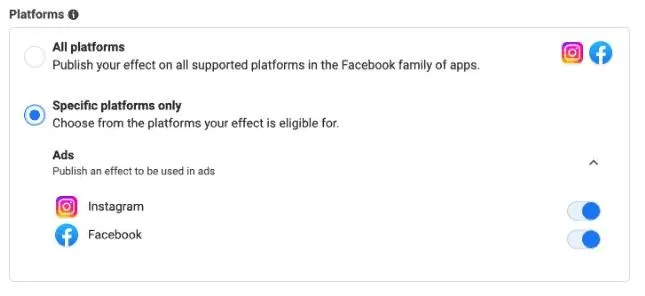
- Fill out the upload form and submit it for moderation.
You can find a more detailed guide in Meta's official documentation.
After successfully passing moderation, you need to select the effect in Ads Manager and then proceed with the standard steps to set up and launch your campaign. To make AR ads available, you need to choose one of the following objectives:
- awareness;
- reach;
- traffic;
- conversions.
When choosing the format, you need to select “Single image or video”. After uploading your creative, you'll need to choose “Add Instant Experience” and “Add Augmented Reality Capabilities” and add your effect that was created in Spark AR Studio. You can also overlay text, such as “Tap to see how the product works”.
You can update the effect after publication. If any changes have been made, the effect must undergo moderation again.
Latest Meta news about AR
At a recent NewFonts presentation, the Meta company announced that augmented reality filters will now be available in Reels and Facebook Stories (source: TechCrunch).
This update is aimed at further expanding the audience and attracting young users of Generation Z, those who are currently 20-25 years old. Meta plans to compete with Snapchat, where AR has been in use since 2015. A major cosmetics brand, Sephora, was one of the first to test the AR format in Reels. The ad visualizes the scents of Sephora perfumes when the user taps the screen.
Meta has added more interactivity to Reels advertising. The company has initiated testing of a large CTA button, where they have included additional information about the advertiser. The button displays the ad's image, title, and a link to the advertiser's website.
Conclusion
AR advertisements and AR masks in social networks allow capturing users' attention, engaging them in dynamic interactions with ads. Thanks to this, advertising is perceived as more native, piques interest, and increases conversion chances. The Meta company has announced that it’ll continue advancing AR technologies, which will bring new opportunities for advertisers and arbitrageurs promoting offers.

by Editor


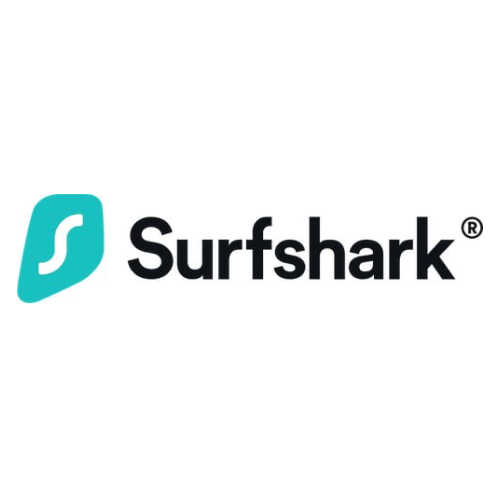
comments ....(0)
Leave a comment
You must be in to leave a comment